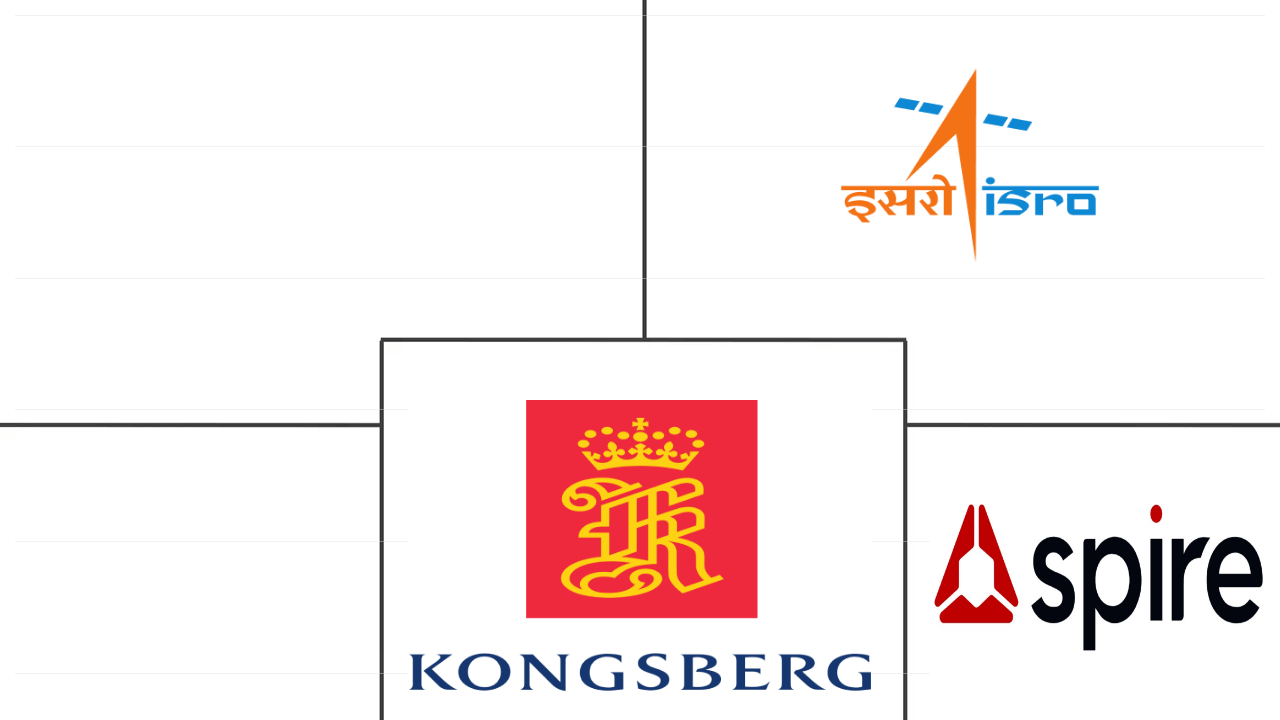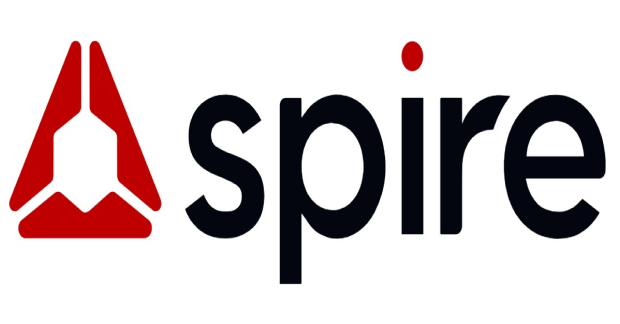Market Size of satellite vessel tracking Industry

|
|
Study Period | 2017 - 2029 |
|
|
Market Size (2024) | USD 139.51 Million |
|
|
Market Size (2029) | USD 289.64 Million |
|
|
Largest Share by Orbit Class | LEO |
|
|
CAGR (2024 - 2029) | 15.73 % |
|
|
Largest Share by Region | North America |
Major Players |
||

|
||
|
*Disclaimer: Major Players sorted in no particular order |
Satellite Vessel Tracking Market Analysis
The Satellite Vessel Tracking Market size is estimated at USD 139.51 million in 2024, and is expected to reach USD 289.64 million by 2029, growing at a CAGR of 15.73% during the forecast period (2024-2029).
139.51 Million
Market Size in 2024 (USD)
289.64 Million
Market Size in 2029 (USD)
-9.20 %
CAGR (2017-2023)
15.73 %
CAGR (2024-2029)
Largest Market by Satellite Mass
65.57 %
value share, 10-100kg, 2022
Microsatellites with expanded capacity for enterprise data (retail, banking), energy (oil, gas, mining), and governments in developed countries are in high demand. The demand for microsatellites with a low Earth orbit (LEO) is increasing due to their expanded capacity.
Largest Market by End User
62.78 %
value share, Commercial, 2022
The commercial segment is expected to occupy a significant share because of the increasing use of satellites for various telecommunication and vessel tracking services.
Largest Market by Orbit Class
100 %
value share, LEO, 2022
LEO satellites are increasingly being adopted in modern communication technologies. These satellites serve an important role in Earth observation applications.
Largest Market by Satellite Subsystem
80.27 %
value share, Propulsion Hardware and Propellant, 2022
The demand for these propulsion systems is driven by the launch of mass satellite constellations into space. They are used for transferring the spacecraft to the orbit.
Leading Market Player
56.10 %
market share, Spire Global, Inc., Inc.

The company's plan to create a wide network of affordable nanosatellites that orbit Earth’s atmosphere by collecting and tracking accurate and granular data makes it as a largest player in the market.
LEO satellites are expected to lead the segment
- It has been noted that the LEO orbit is widely chosen among the other two orbits because of its proximity to the Earth. Many weather and communication satellites tend to have high Earth orbits farthest from the surface. Satellites in medium Earth orbit include navigational and specialized satellites designed to monitor a specific area. Most vessel tracking satellites and Earth observation satellites are in low Earth orbit.
- Initially, after the introduction of Automatic Identification System (AIS) equipment and its availability, this equipment had a major limitation. The Earth's curvature limits the AIS equipment's horizontal range to about 74 km from shore. However, this information availability challenge has been eliminated with the technological development and introduction of small satellites into low Earth orbit.
- From 2017 to 2022, 115+ satellite vessel tracking satellites manufactured and launched were placed in low Earth orbit because of their added advantages. Various countries across the globe own these satellites for commercial purposes.
- The increasing use of these satellites in areas such as tracking ships to prevent pollution, identifying the movement of dangerous goods, and maritime surveillance is expected to drive the demand for the development of satellites during the forecast period.
North America is driving the market
- Government agencies in North America have collaborated with the major providers of automatic identification systems (AIS). ORBCOMM Inc., an Internet of Things (IoT) solutions provider, won a multi-year contract from a US government agency to competitively innovate its global automatic identification system (AIS), a data service that is used for vessel tracking and other maritime navigation and safety efforts. In addition, ORBCOMM was awarded a separate competitive contract to provide AIS services to certain other US government users. Hence, growing business activity in the region is expected to drive the market’s growth throughout the forecast period.
- In Europe, France has been extensively concentrating on improving its military capabilities. Airbus was selected to offer its proficiency in strategic ELINT systems using its experience in programs such as PARADOS (radio signal acquisition sensor) and RAMSES (strategic radio and satellite communication information system). These systems are currently in operational service with the French Army, the French Air and Space Force, France’s Defense Intelligence Agency, and the French Navy.
- In order to track ships in the Indian Ocean, India and France formalized the launch of about 10 LEO satellites with AIS technology in 2019. India was also focused on the development of the National Maritime Domain Awareness (NMDA) project, under which the Indian Navy has established the National Command Control Communication Intelligence (NC3I) network that hosts the Information Management and Analysis Centre (IMAC).
Satellite Vessel Tracking Industry Segmentation
10-100kg, 100-500kg, Below 10 Kg are covered as segments by Satellite Mass. GEO, LEO, MEO are covered as segments by Orbit Class. Propulsion Hardware and Propellant, Satellite Bus & Subsystems, Solar Array & Power Hardware, Structures, Harness & Mechanisms are covered as segments by Satellite Subsystem. Commercial, Military & Government are covered as segments by End User. Asia-Pacific, Europe, North America are covered as segments by Region.
- It has been noted that the LEO orbit is widely chosen among the other two orbits because of its proximity to the Earth. Many weather and communication satellites tend to have high Earth orbits farthest from the surface. Satellites in medium Earth orbit include navigational and specialized satellites designed to monitor a specific area. Most vessel tracking satellites and Earth observation satellites are in low Earth orbit.
- Initially, after the introduction of Automatic Identification System (AIS) equipment and its availability, this equipment had a major limitation. The Earth's curvature limits the AIS equipment's horizontal range to about 74 km from shore. However, this information availability challenge has been eliminated with the technological development and introduction of small satellites into low Earth orbit.
- From 2017 to 2022, 115+ satellite vessel tracking satellites manufactured and launched were placed in low Earth orbit because of their added advantages. Various countries across the globe own these satellites for commercial purposes.
- The increasing use of these satellites in areas such as tracking ships to prevent pollution, identifying the movement of dangerous goods, and maritime surveillance is expected to drive the demand for the development of satellites during the forecast period.
| Satellite Mass | |
| 10-100kg | |
| 100-500kg | |
| Below 10 Kg |
| Orbit Class | |
| GEO | |
| LEO | |
| MEO |
| Satellite Subsystem | |
| Propulsion Hardware and Propellant | |
| Satellite Bus & Subsystems | |
| Solar Array & Power Hardware | |
| Structures, Harness & Mechanisms |
| End User | |
| Commercial | |
| Military & Government | |
| Other |
| Region | |
| Asia-Pacific | |
| Europe | |
| North America | |
| Rest of World |
Satellite Vessel Tracking Market Size Summary
The Satellite Vessel Tracking Market is experiencing significant growth, driven by advancements in satellite technology and increasing demand for maritime surveillance and navigation solutions. The market is characterized by the deployment of small satellites in low Earth orbit, which offer enhanced capabilities over traditional systems. These satellites are crucial for tracking ships, preventing pollution, and monitoring the movement of hazardous goods. The market's expansion is supported by collaborations between government agencies and private companies, particularly in North America and Europe, where significant investments are being made to enhance military and maritime capabilities. The United States, with its robust space programs and leading satellite manufacturing, plays a pivotal role in the market's growth, alongside European nations like France and Germany, which are also investing heavily in space technology.
In the Asia-Pacific region, countries such as China, Japan, and India are contributing to the market's expansion through the production of nano and microsatellites. These nations are increasing their space budgets to bolster their satellite capabilities, reflecting a global trend towards miniaturization and commercialization of space technology. The market is fairly consolidated, with major players like HEAD Aerospace, ISRO, Indra Systemmas, Kongsberg, and Spire Global, Inc. leading the charge. These companies are actively launching new satellites and expanding their operational capacities to meet the growing demand for satellite vessel tracking solutions. As the market continues to evolve, it is expected to see further innovations and competitive strategies aimed at capturing a larger share of the global market.
Satellite Vessel Tracking Market Size - Table of Contents
-
1. MARKET SEGMENTATION (includes market size in Value in USD, Forecasts up to 2029 and analysis of growth prospects)
-
1.1 Satellite Mass
-
1.1.1 10-100kg
-
1.1.2 100-500kg
-
1.1.3 Below 10 Kg
-
-
1.2 Orbit Class
-
1.2.1 GEO
-
1.2.2 LEO
-
1.2.3 MEO
-
-
1.3 Satellite Subsystem
-
1.3.1 Propulsion Hardware and Propellant
-
1.3.2 Satellite Bus & Subsystems
-
1.3.3 Solar Array & Power Hardware
-
1.3.4 Structures, Harness & Mechanisms
-
-
1.4 End User
-
1.4.1 Commercial
-
1.4.2 Military & Government
-
1.4.3 Other
-
-
1.5 Region
-
1.5.1 Asia-Pacific
-
1.5.2 Europe
-
1.5.3 North America
-
1.5.4 Rest of World
-
-
Satellite Vessel Tracking Market Size FAQs
How big is the Satellite Vessel Tracking Market?
The Satellite Vessel Tracking Market size is expected to reach USD 139.51 million in 2024 and grow at a CAGR of 15.73% to reach USD 289.64 million by 2029.
What is the current Satellite Vessel Tracking Market size?
In 2024, the Satellite Vessel Tracking Market size is expected to reach USD 139.51 million.

